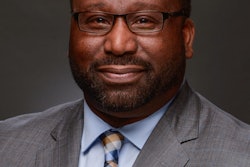Scholars and academic institutions help local communities grow new employment sector.
Emerging in recent years from the need for increased energy effi- ciency and conservation, greater reduction of greenhouse gas emissions, and stepped-up action to clean the environment, green jobs have arisen as a distinct employment sector within the U. S. and around the world.
While social and political activists have taken the lead to make sure low-income individuals get access to green jobs, scholars and academic institutions have joined them to provide institutional and intellectual support to the effort.
For Dr. Raquel Rivera Pinderhughes, the emergence of a green jobs sector for working class Americans has motivated the San Francisco State University urban studies professor to research the growing field and advocate for training and job opportunities for those seeking blue-collar environmental, or “green-collar” jobs as she describes it. The veteran scholar is the author of the “Pinderhughes model,” which establishes principles and objectives for green jobs training practices and employment placement.
“I have done research on urban poverty for about 30 years… . My particular focus in the green economy is on what I call these ‘green-collar’ jobs, which are living wage, manual labor jobs,” Pinderhughes says. “I have spent all of my academic career trying to figure out how to focus on solutions. It may be somewhat unique for a scholar who documents the problem to also then jump into the space of creating training programs.”
Scholars such as Pinderhughes and academic institutions are helping push the green-jobs movement toward providing poor and working-class Americans access to long-term and high-quality employment. Well aware that post-World War II employment trends in high technology largely bypassed Americans with relatively low education and work skills, scholars along with environmental justice activists, labor union officials, policymakers and others see considerable potential in what a vibrant 21st century green-jobs sector may offer socially disadvantaged Americans.
The careful study of environmentalism and urban issues, for example, led Pinderhughes “to understand that there might be a set of opportunities, probably entry-level opportunities that might be suited for people with lower levels of skill and education.”
In a 2007 study, she identified 22 different sectors of the green economy. “I have always been interested in the intersection between environment and social equity and it made perfect sense to consistently search for opportunities where we could address environmental problems with social equity issues at the same time.”
Global Insight, an economics forecasting organization, has projected that potential growth in green jobs could make that sector the fastest growing one and occupy a significant share of total jobs in the U.S. economy. Green jobs could spring from a 2008 count of 750,000 jobs, or less than 0.5 percent, to more than 4.2 million jobs over the next three decades. That would mean green jobs could account for 10 percent of new employment growth for that period, according to Global Insight.
Many Americans became aware of green jobs this year due to the short-lived stint of green jobs activist Van Jones as a White House environmental adviser. More than anyone, Jones, a Yale University-trained attorney, has helped elevate green jobs as a social and economic issue over the past several years. Organizations such as the Ella Baker Center for Human Rights that Jones co-founded have developed important initiatives that have identified and readied poor, inner-city residents for green-jobs Skills training. Despite leaving the White House over the furor attributed to his past statements and alleged ties to controversial organizations before his federal appointment, Jones remains an important and inspiring figure in the green jobs movement.
Dr. Melissa Harris-Lacewell, associate professor of politics and African-American studies at Princeton University, has described Jones as having added an important but neglected voice in the push by progressives to develop policies that facilitate adaption to climate change and alternative energy use by Americans. “Conservation and climate-change environmentalism has dominated both federal policy and the national imagination. The local movements were often effective in blocking specific land use decisions, but largely ineffective in creating coherent national policy agendas… . Jones embodied a new civil rights agenda combining concerns of racial equality with labor fairness and environmental sustainability,” Harris-Lacewell wrote last month in The Nation magazine.
“Van Jones has got it right when he’s been saying ‘this is an opportunity to do something great.’ It really is when you look at all the challenges that exist globally in terms of the environment, in terms of what we can do better. There is an opportunity to start training more people for these future jobs,” says Dr. Malo Hutson, assistant professor of city and regional planning at the University of California-Berkeley.
Community Colleges in the Mix
Though there’s been national attention accorded to the green jobs movement, much of the activity around training and work force development remains a local concern. Experts report that, while consumer demand for green products is pushing large corporations to alter their practices and priorities, new policies by local and state governments to require green building standards and higher energyefficiency measures have helped drive green jobs development.
“What you see now as a whole movement toward urban sustainability is very exciting. You have cities across the United States passing local policies, such as green building ordinances; you have them setting climate action plans; you have them thinking about equity in a different way — creating jobs that would provide people with wages that are actually sustainable,” Hutson says.
With local entities poised to create demand for green technology and construction, a handful of academic institutions, such as community colleges, are providing the venue for the development of training programs. As partners with activist and community organizations and local government agencies, community colleges have become a critical element because of their ability to customize work force skills training for short-term programs.
One closely watched program underway designed to turn low-income residents in Oakland, Calif., into workers trained for solar energy and energy-efficiency construction work is the Oakland Green Jobs Corps initiative. The program, a collaborative effort involving Oakland-based Laney College and local work force organizations, is providing instruction and job placement services for dozens of residents. Since January, nearly 100 people have entered the six-month green construction program, which is based on the Pinderhughes model. The first cohort of 40 students completed their study in June.
“One subject area we’re teaching is renewable energy and that has to do with solar and photovoltaic technology. This is what we’re primarily focusing on — renewables,” says Peter Crabtree, dean of instruction for vocational technology at Laney College.
Tracey Weaver, a case manager for the Oakland Green Jobs Corps program, says the participants fall either into an 18- to 24-year-old at-risk young adult group or a 25-and-older chronically under-employed cohort. Participants have been overwhelmingly young men who live in areas where there’s considerable gang-related activity, and many have been in trouble with the law and are at-risk for being recruited into gangs, Weaver explains.
“While in the program, many of them become excited over the idea they’re learning important new technologies. It has given them a sense of pride,” Weaver says, adding that she’s seeing an 85 percent program completion rate by participants.
Crabtree says the tough economic conditions have led to a temporary slowdown in the solar energy panel business in northern California, but that overall job placement has been roughly 75 percent for program participants. Successful participants have been placed in alternative energy companies, as well as those that upgrade energy efficiency in homes and commercial buildings.
“The photovoltaic classes and the solar panel installer classes that we’ve been teaching as part of Oakland Green Jobs Corps really are part of a broader degree and certificate in electrical technology,” Weaver says. “We pulled out of those broader offerings to create these short-term programs that prepare people to go to work.”
Weaver says the participants who have gained employment through the program average between $16 and $18 an hour in wages.
Foundation grants and local organization donations, including a $250,000 seed grant from the city of Oakland, have supported the Oakland Green Jobs Corps.
“Providing quality jobs in a growing economic sector is crucial for the future of Oakland,” Oakland Mayor Ron Dellums said in a statement. “Expanding existing entry points into our work force through the creation of green jobs will solidify this city’s position as a national leader on green economic growth and advance our vision of Oakland as a model, sustainable city.”
Pinderhughes says she expects more community colleges and local organizations to look for training models that blend the skills training and basic literacy education that her model emphasizes.
“Environmental remediation and renewable energy policy developments will be undertaken by local and state governments for some time to come,” she says.


















